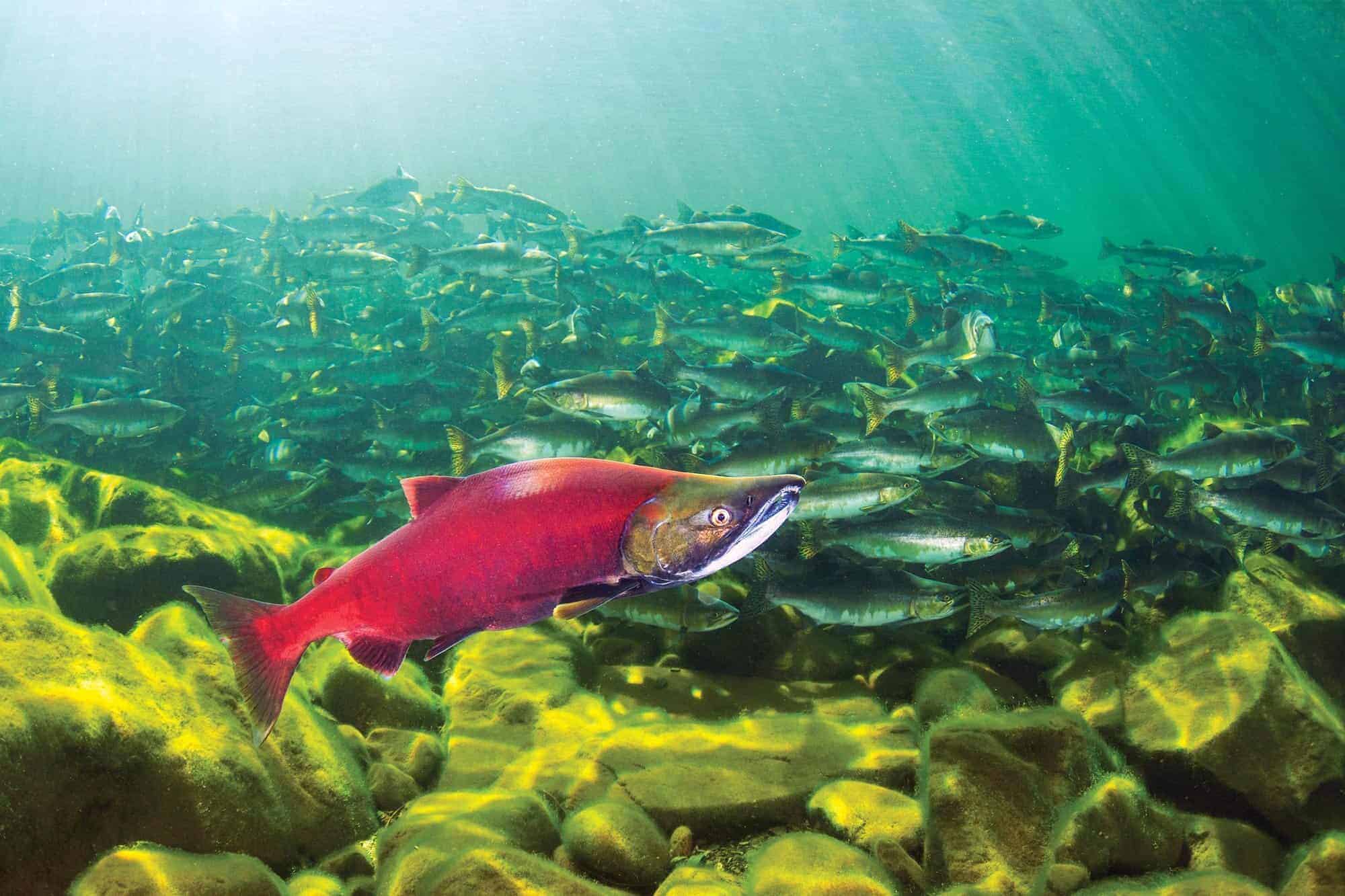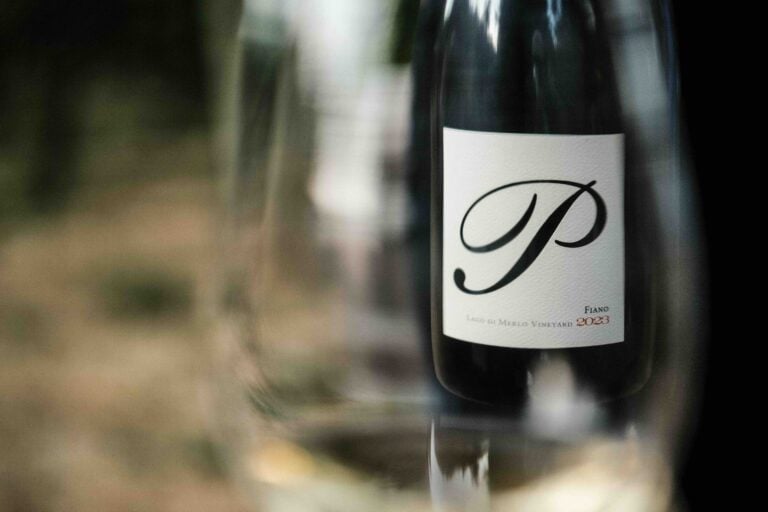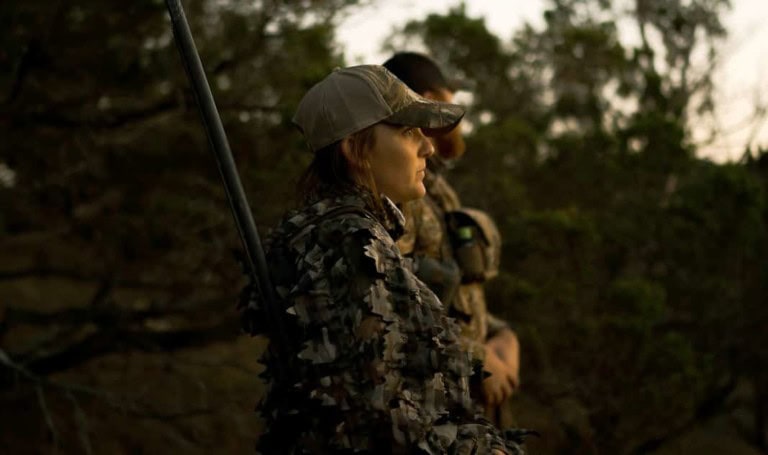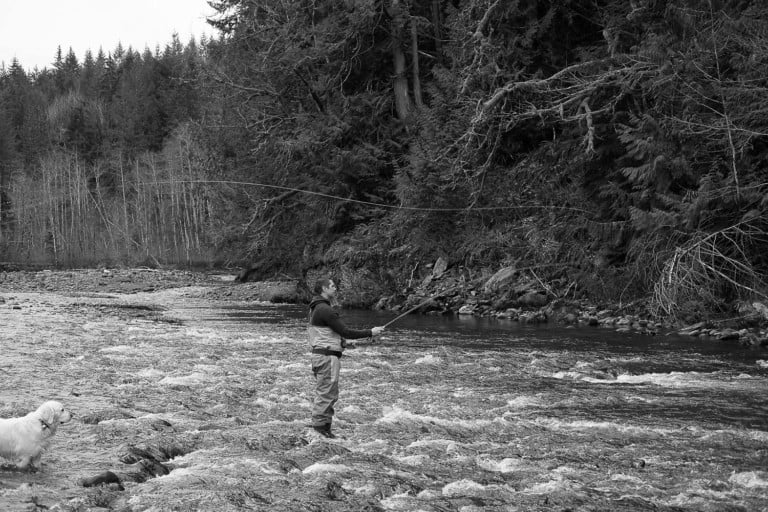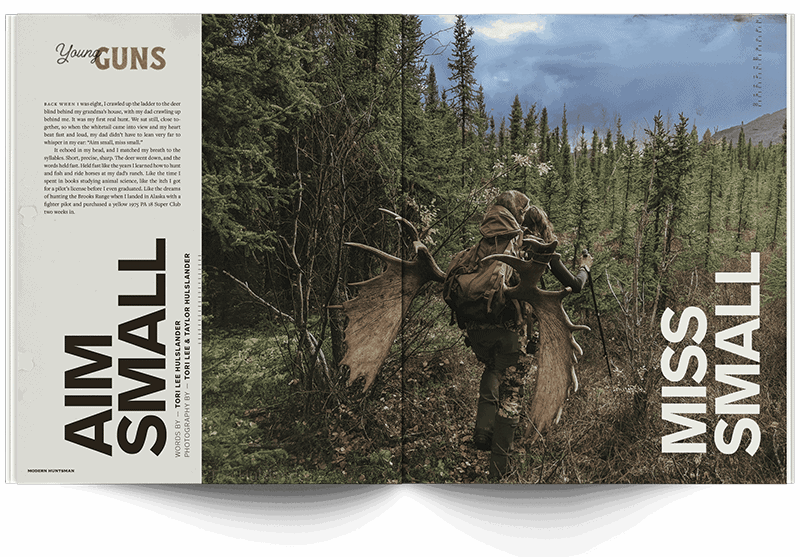In late June, 1919, Robert Gibson was feeling optimistic about the salmon. A Scottish veteran of World War I newly arrived in northwest Canada with his wife and infant son, he had recently taken a job as constable and fisheries overseer in the bustling cannery town of Port Essington, on British Columbia’s north coast.
Besides the typical tasks of policing, Gibson was also in charge of tracking the numbers of sockeye salmon that returned from the ocean each summer to spawn in various tributaries of the Skeena River. Each day he would examine 50 or more fish, caught by a flotilla of canoes and wooden skiffs waiting with linen nets at the mouth of the river, which ended its long journey to the Pacific just west of Port Essington. In a black notebook, he’d mark the date of capture, length, weight, and sex of each fish. “Sockeye are surprisingly good for beginning of season,” he wrote on June 23.
After he measured the fish, Gibson also took samples from them, removing a patch of scales with a dull knife and smearing them onto a notebook page, stuck fast in their own slime. At the end of each season, he would ship those notebooks to California, where a Stanford University biologist named Charles Henry Gilbert would examine the scales with a microscope to determine each fish’s age.
Port Essington, which sat on the site of a traditional Indigenous hunting and fishing ground, had been a cannery town for almost half a century by then—the province’s ebbing Gold Rush replaced by “silver fever” as migrants sought profit and livelihood on the backs of the millions of shimmering salmon. In peak season, more than 1,300 skiffs, working six days a week, unloaded hundreds of thousands of silvery fish up an escalator and down
